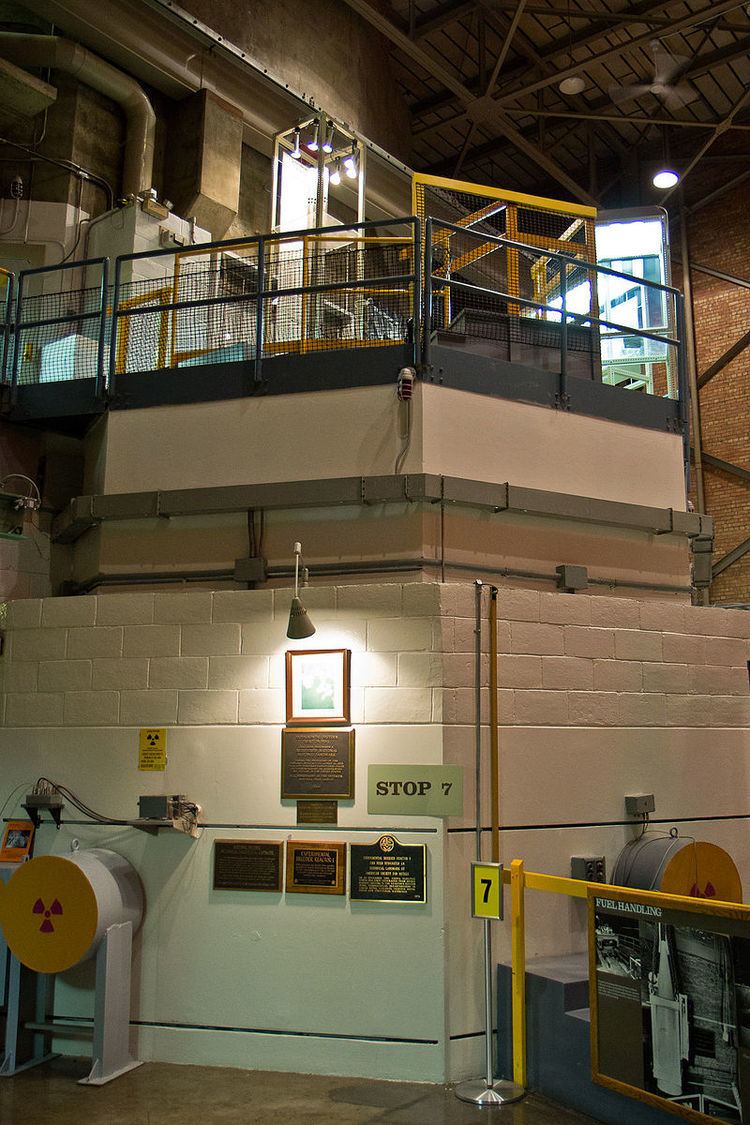NRHP Reference # 66000307 Address Arco, ID 83213, USA Area 4,047 m² | Built 1950 Designated NHL December 21, 1965 Opened 1950 Added to NRHP 15 October 1966 | |
 | ||
Hours Open today · 9AM–5PMFriday9AM–5PMSaturday9AM–5PMSunday9AM–5PMMonday9AM–5PMTuesday9AM–5PMWednesday9AM–5PMThursday9AM–5PM Similar Advanced Test Reactor, Fast Flux Test Facility, Chicago Pile‑1, Enrico Fermi Nuclear, Shippingport Atomic Power St | ||
Tour of experimental breeder reactor i ebr i
Experimental Breeder Reactor I (EBR-I) is a decommissioned research reactor and U.S. National Historic Landmark located in the desert about 18 miles (29 km) southeast of Arco, Idaho. At 1:50 p.m. on December 20, 1951, it became one of the world's first electricity-generating nuclear power plants when it produced sufficient electricity to illuminate four 200-watt light bulbs. Electricity had earlier been generated by a nuclear reactor on September 3, 1948 at the X-10 Graphite Reactor in Oak Ridge, Tennessee. EBR-I subsequently generated sufficient electricity to power its building, and continued to be used for experimental purposes until it was decommissioned in 1964.
Contents
History
As part of the National Reactor Testing Station (now Idaho National Laboratory), EBR-I's construction started in late 1949. The reactor was designed by a team led by Walter Zinn at the Argonne National Laboratory. In its early stages, the reactor plant was referred to as Chicago Pile 4 (CP-4) and Zinn's Infernal Pile. Installation of the reactor at EBR-I took place in early 1951 (the first reactor in Idaho) and it began power operation on August 24, 1951. On December 20 of that year, atomic energy was successfully harvested for the first time. The following day, the reactor produced enough power to light the whole building. The power plant produced 200 kW of electricity out of 1.4 MW of heat generated by the reactor.
The design purpose of EBR-I was not to produce electricity but instead to validate nuclear physics theory which suggested that a breeder reactor should be possible. In 1953, experiments revealed the reactor was producing additional fuel during fission, thus confirming the hypothesis. On November 29, 1955, the reactor at EBR-I suffered a partial meltdown during a coolant flow test. The flow test was trying to determine the cause of unexpected reactor responses to changes in coolant flow. It was subsequently repaired for further experiments, which determined that thermal expansion of the fuel rods and the thick plates supporting the fuel rods was the cause of the unexpected reactor response.
Although EBR-I produced the first electricity available in-house, a nearby reactor plant called BORAX-III was connected to external loads, powering the nearby city of Arco, Idaho in 1955, the first time a city had been powered solely by nuclear power.
Besides generating the world's first electricity from atomic energy, EBR-I was also the world's first breeder reactor and the first to use plutonium fuel to generate electricity (see also the Clementine nuclear reactor). EBR-1's initial purpose was to prove Enrico Fermi's fuel breeding principle, a principle that showed a nuclear reactor producing more fuel atoms than consumed. Along with generating electricity, EBR-1 would also prove this principle.
Decommission and legacy
EBR-I was deactivated in 1964 and replaced with a new reactor, Experimental Breeder Reactor II. Landmark status for EBR-I was granted by President Lyndon Johnson and Glenn T. Seaborg on August 25, 1966.
It was declared a National Historic Landmark in 1965 and an IEEE Milestone in 2004.
